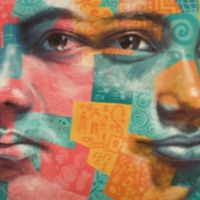
Destaye
There are an estimated 614,000 people living in conditions of modern slavery in Ethiopia (GSI 2018). Child marriage remains a deeply rooted tradition in Ethiopian communities with two in five girls being married before their 18th birthday. Child marriage is perpetuated in the country by poverty, lack of access to education and an absence of economic opportunities. Moreover, 80% of women have experienced female genital mutilation/cutting, with over half of these circumcisions occurring before a girl's first birthday. Destaye was 11 years old when she was chosen by a priest in his twenties to be his wife. Her husband said he wanted a young, uneducated bride to ensure her virginity. He promised Destaye she could continue her education after giving birth, however childcare and having to work with her husband farming has meant she has been unable to. Destaye wanted to be a doctor.
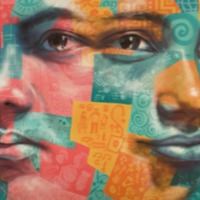
Jamie B
There are an estimated 403,000 people living in conditions of modern slavery in the United States (GSI 2018). Among this number, are children subjected to forced marriage. A study published on child marriage in 2011 determined that the prevalence of child marriage among women in the US was 8.9 percent, meaning that over 9.4 million US women were married at age 16 or younger. Forced marriage and child marriage are understudied problems within the United States and more research is needed to determine what drives its occurrence. Jamie was forced in to an arranged marriage when she was 19, to a man who beat and raped her and abused their children.
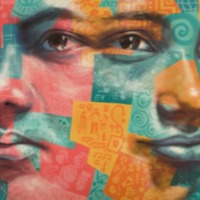
Jasmine Grace
There are an estimated 403,000 people living in modern slavery in the United States (GSI 2018). Sex trafficking exists throughout the country. Traffickers use violence, threats, lies, debt bondage and other forms of coercion to compel adults and children to engage in commercial sex acts against their will. The situations that sex trafficking victims face vary, many victims become romantically involved with someone who then forces them into prostitution. Others are lured with false promises of a job, and some are forced to sell sex by members of their own families. Victims of sex trafficking include both foreign nationals and US citizens, with women making up the majority of those trafficked for the purposes of commercial sexual exploitation. In 2015, the most reported venues/industries for sex trafficking included commercial-front brothels, hotel/motel-based trafficking, online advertisements with unknown locations, residential brothels, and street-based sex trafficking. Jasmine Grace was 18 years old when she first met Brian. They began to see each other often and Brian bought Jasmine Grace nice things. One night, Brian took Jasmine Grace to see her friend who had become engaged in prostitution after also meeting a man. Her friend told her about the amazing life she had, how much money she was making and how her ‘boyfriend’ took care of her. After being taught how to service johns, Jasmine Grace recalls how Brian kept her under his control through beatings, violence and threats for 5 years. Though Jasmine Grace managed to escape her trafficker, she notes how her life spiralled as she became homeless and addicted to heroin, taking another 3 years before she was able to get clean.
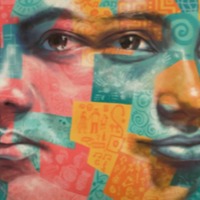
Yogendra
The Global Slavery Index 2018 estimates that on any given day there were nearly 8 million people living in modern slavery in India. While the bonded labour system is formally abolished and criminalised, recent research indicated that bonded labour is still prevalent in India. A 2016 report found that in the state of Tamil Nadu, 351 of 743 spinning mills used bonded labour schemes, otherwise known as Sumangali schemes. Similarly in granite quarries, wage advances and loans with an interest ranging from 24% to 36% are used to bond workers. Situations of debt bondage are often aggravated by the need to raise emergency funds or take on loans for health crises. Yogendra tells of his experience as a bonded labourer in Uttar Pradesh. He was approached by a broker offering him 50,000 rupees and a hectare of land if he worked a year. After signing a blank piece of paper, Yogendra received just 37,000 rupees and was forced to work under threats and verbal abuse. Yogendra tells of having to work off money borrowed for his sister’s wedding and his children’s school fees.
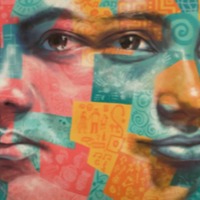
Poppy
The Global Slavery Index 2018 estimates that on any given day there were nearly 8 million people living in modern slavery in India. The GSI 2018 reports an emerging trend in northeast India where organised trafficking syndicates operate along the open and unmanned international borders, duping or coercing young girls seeking employment outside their local area in to forced sexual exploitation. Many women and girls are lured with the promise of a good job but then forced in to sex work, with a 'conditioning' period involving violence, threats, debt bondage and rape. Poppy, along with her older sister Jesmin and the rest of her family, migrated to Mumbai when she was young. Once there, Poppy and her sisters went to work in a ‘bar’ to help support their family. Poppy worked massaging men where she was subjected to physical and sexual abuse.
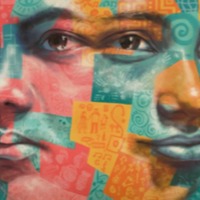
Mumtaz
There are an estimated 592,000 people living in modern slavery in Bangladesh (GSI 2018). Men, women and children are subjected to forced labour and sex trafficking. Bangladesh is host to more than 1 million undocumented Rohingya, including hundreds of thousands who fled Burma in previous decades. The Rohingya community’s stateless status and inability to work legally increases their vulnerability to human trafficking. Rohingya women and girls are reportedly recruited from refugee camps for domestic work and are instead subjected to sex trafficking. Within the country, Bangladeshi children and adults are subjected to sex trafficking, domestic servitude, and forced and bonded labour, in which traffickers exploit an initial debt assumed by a worker as part of the employment terms. Mumtaz was brought to Watgoni by her husband, a man from Comilla. Her husband used to work at the Watgoni dockyard where a large brothel attended to the needs of sailors and dockers. He lost his job and a few months later brought Mumtaz and engaged her in sex work. It took Mumtaz 7 years to be able to get away from her husband’s control and tyranny. A friend helped her move out of Watgonj and settle in Tallygonj. She has been working with the DMSC since 1993.

Ly
Minority children and those from very poor families are extremely vulnerable to trafficking in China. A highly organised practice exists where couples have children for the very purpose of selling them. Children from minorities are also deceived into trafficking under the false promise of work in hospitality, construction and manufacturing but are instead forced to engage in criminal activity or prostitution. There are also an estimated 1.5 million children currently enslaved as forced beggars in China. Ly was 8 months pregnant when she was trafficked to China for her and her baby to be sold.

Neng
The internal migration of Chinese people seeking work has created an opportunity for human traffickers in China. Moreover the gender imbalance caused by the One Child Policy and the cultural preference for male children, has caused a shortage of women which has led to the trafficking of women to be sold as brides. As a result many women find themselves either deceived by promises of employment, sold or abducted and forced into marrying Chinese men who have paid for them. The prevalence of poverty in China makes the poor more vulnerable to enslavement. With the National Bureau of Statistics estimating that 70,170,000 are still living in poverty, people are more desperate and thus more likely to be receptive to fraudulent job offers. Neng was just 14 when she was taken to China by her cousin who upon arrival forced her to marry a man 15 years her senior. Neng was able to escape and found her way to a shelter that seeks to support young girls who have survived human trafficking.
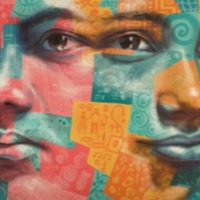
Charlie
Despite having the lowest regional prevalence of modern slavery in the world, Europe remains a destination, and to a lesser extent, a source region for the exploitation of men, women and children in forced labour and commercial sexual exploitation. According to the most recent Eurostat findings, European Union (EU) citizens account for 65 percent of identified trafficked victims within Europe. These individuals mostly originate from Eastern Europe, including Romania, Bulgaria, Lithuania and Slovakia. In Albania and Bosnia and Herzegovina, the European Parliament has identified corruption and the judicial system as reform challenges towards accession talks within the EU. In Greece, the turbulent economic situation has increased vulnerability for populations seeking employment and livelihood opportunities. In Greece, unemployment reached 24.4 percent in January 2016 with a youth unemployment rate of 51.9 percent. Charlie was forced to provide sexual services to older men in the UK. She was finally able to escape when one of the clients took pity on her and helped her escape. With the help of AFRUCA, Charlie is getting back on her feet.
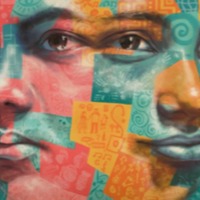
Tim
Despite having the lowest regional prevalence of modern slavery in the world, Europe remains a destination, and to a lesser extent, a source region for the exploitation of men, women and children in forced labour and commercial sexual exploitation. According to the most recent Eurostat findings, European Union (EU) citizens account for 65 percent of identified trafficked victims within Europe. These individuals mostly originate from Eastern Europe, including Romania, Bulgaria, Lithuania and Slovakia. In Albania and Bosnia and Herzegovina, the European Parliament has identified corruption and the judicial system as reform challenges towards accession talks within the EU. In Greece, the turbulent economic situation has increased vulnerability for populations seeking employment and livelihood opportunities. In Greece, unemployment reached 24.4 percent in January 2016 with a youth unemployment rate of 51.9 percent. Tim thought he had escaped an exploitative situation when he fled the house of his employer. While wandering the streets he was approached by a woman who offered to help him. However, upon arrival at her house, he was forced to undertake all the housework and childcare responsibilities and was prevented from leaving the house except to pick the children up from school.

Deependra
Migrant workers from Asia and Sub-Saharan African continue to flock to the Middle East for work. Migrant workers are subject to practices that may amount to forced labour including extortionate recruitment fees, illegal confiscation of identity documents, withholding and non-payment of salaries, hazardous working conditions, unhygienic living conditions, unlawful overtime performed under the threat of deportation, and physical and sexual abuse. In 2015 an IOM and Walk Free study of 162 exploited migrant workers from Iraq, Jordan, Lebanon, Egypt and Saudi Arabia, 100% of workers had their identity documents withheld, 87% were confined to their workplace and 76% had their wages withheld. Deependra Giri was looking for work when he was offered a job with a good salary in Qatar as a clerk. Upon arrival, Deependra's passport was confiscated and he was taken to an industrial area where he was forced to undertake manual labour. Due to the Kafala system in Qatar, Deependra was committed to his contract and was unable to leave the country. After completing his 2-year agreement Deependra managed to convince his employer to allow him to go home for 2 weeks to see his family. Once back in Nepal, Deependra informed his manager that he would not be returning.
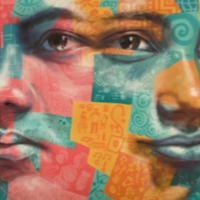
Gilberto
Brazil is a source country for men and boys trafficked internally for forced labor which accounts for most instances of modern slavery in Brazil. It is particularly prevalent in manual labour sectors such as construction, manufacturing, factory and domestic work and occurs in rural and urban areas, mainly through debt bondage schemes. In rural areas workers are immobilised in estates until they can pay off debts often fraudulently incurred; their identity documents and work permits are frequently retained; they are often physically threatened and punished by armed guards and some have been killed while attempting to flee. Debt bondage involves abusive labour contracting schemes operated by contractors known locally as empreiteiros or gatos, often engaged in other types of seasonal labour contracts. Gilberto went looking for work when he was recruited to work in a forest cutting trees. Forced to work long hours with little food and pay, Gilberto tried to leave his situation but was told by the gato that recruited him that he owed him money for the tools, food and transport and had to pay off his debt before he could leave. After five months of malnutrition and witnessing the sexual abuse of young boys, Gilberto ran away.
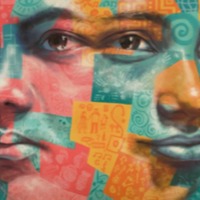
Artem
The UK National Crime Agency estimates 3,309 potential victims of human trafficking came into contact with the State or an NGO in 2014. The latest government statistics derived from the UK National Referral Mechanism in 2014 reveal 2,340 potential victims of trafficking from 96 countries of origin, of whom 61 percent were female and 29 percent were children. Of those identified through the NRM, the majority were adults classified as victims of sexual exploitation followed by adults exploited in the domestic service sector and other types of labour exploitation. The largest proportion of victims was from Albania, followed by Nigeria, Vietnam, Romania and Slovakia. In 2009 Artem, a 56-year-old Hungarian, was working as a builder and bus driver. The recession left him unemployed, homeless, and supporting his elderly mother. Duped by false promises he came to the UK. He was forced to live in a small house with 25 men, working 70 hours per week for £10. He escaped, living in disused garages but was re-trafficked twice and was too afraid to leave for fear of becoming homeless again. Artem was found by police after a failed suicide attempt. He was identified as a victim of human trafficking and moved to safe accommodation in Birmingham in 2014.